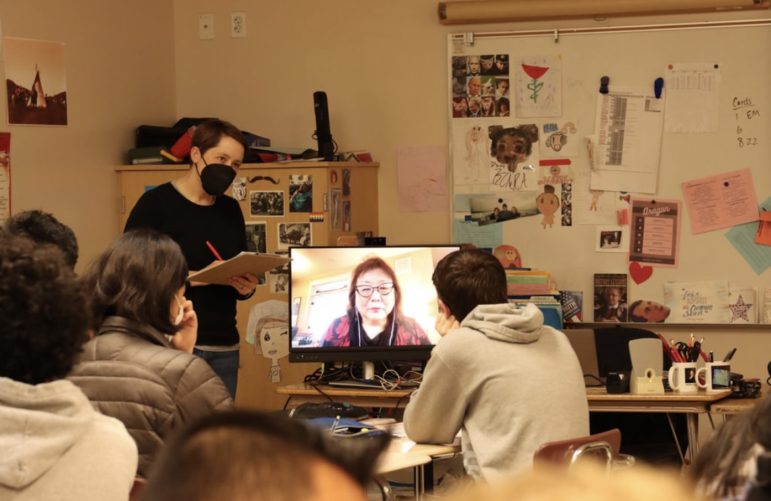
On March 3 and 4, guest speaker Peggy Nagae virtually visited the AP U.S. History classes. Nagae is a lawyer who helped overturn the conviction of Minoru Yasui through the Yasui v. United States Supreme Court case in 1986. The original conviction of Yasui was made in 1942, after Yasui broke a curfew enforced upon Japanese Americans during World War II.
President Franklin D. Roosevelt issued executive order 9066 in America on Feb. 19, 1942, after the attack on Pearl Harbor. The law entailed a strict curfew for people of Japanese descent, deeming Japanese Americans a threat to America and eventually leading to an incarceration requirement.
Yasui was a Japanese American lawyer who intentionally broke the curfew, intending to gain the Supreme Court’s attention. He argued against the law’s violation of constitutional rights. After being arrested, Yasui, along with other Japanese Americans such as Fred Korematsu and Gordon Hirabayashi, sued the U.S. government.
“[Nagae is] the embodiment of a career woman who was able to challenge the federal government“
APUSH teacher Heather Sadlon provided more background.
“At the time, the Supreme Court heard these cases and determined that because the U.S. was in a time of war, the U.S. government had expanded war time powers [and did not overstep its boundaries],” Sadlon said. “For decades after, the three men and their lawyers were pushing back and trying to get their felony convictions overturned. Their convictions were eventually overturned in the 1980s as new evidence came forward that the U.S. government was suppressing [evidence that] the government knew [the] Japanese as a whole group were not a threat to Americans.”
Nagae was the lead attorney for Yasui when this new evidence came to light and used it to overturn his conviction. In addition to being a criminal and civil trial attorney, Nagae is currently co-chair of the Diversity Task Force for the National Asian Pacific American Bar Association.
APUSH teacher Will Colglazier coordinated the Zoom visit with Nagae. His goal was to inspire students.
“Being able to hear history, not just from the teacher, but from someone on the outside, makes the kids lean in and pay attention a bit more,” Colglazier said. “[Nagae is] a professional who used her career to do good. She’s the embodiment of a career woman who was able to challenge the federal government and hold a mirror up to them and show how they made a mistake. [She addressed] that by overturning Minoru Yasui’s conviction.”
“It’s cool to hear living history [from] people involved in the movement”
This topic is prominent in today’s society with the increase in hate crimes targeting Asian Americans. The visit from Nagae aimed to allow students to tie what they are learning in their classes to the modern day.
“It’s so cool to hear living history [and learn from] people who were involved in the moment,” said junior Deirdre Doyle. “It makes learning the subject a lot more real and gives me something to connect to. Being able to bring in outside sources is such a privilege for us to have. I hope to gain a [more] empathetic understanding of what happened with the Japanese internment [from this experience].”
According to junior Zoe Neil, another APUSH student, this experience also allows students to learn about an event that is often excluded from American history classes.
“I really appreciate when [the class] illustrates stories that aren’t commonly told in America,” Neil said. “I don’t think many people know about the Japanese incarceration. It’s not part of the common story of World War II because it makes us look like the bad guys. It’s just so blanked out by society, and it’s unfair that there’s this experience that America hasn’t really atoned for.”
According to Neil, guest speakers add a tangible element to the classroom that can seem missing when students are learning about something that happened decades ago.
“I wish [the school] would [invite speakers] more because it makes the history [more] physical,” Neil said. “In class, it often seems like you’re just learning about the dates and numbers, and you forget about the people who’ve lived through it.”

